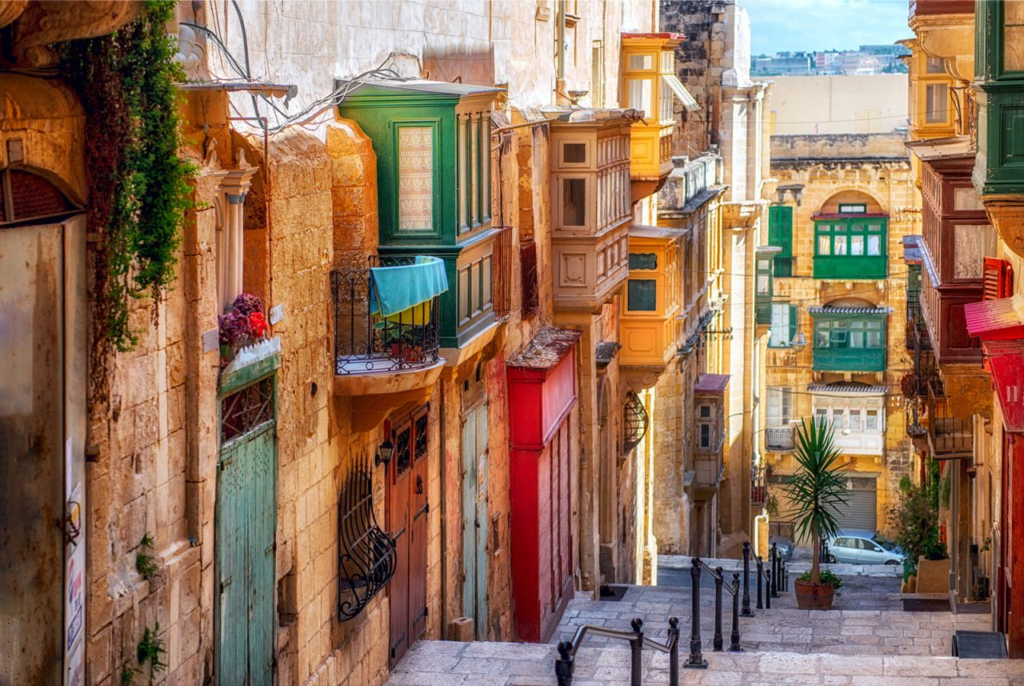
Malta itself is the biggest island in the Maltese archipelago, and many visitors see no need to leave it. No wonder – the 95-square-mile (246-square-kilometer) island ticks all the boxes for history, culture, beaches and even nightlife.
Start at Valletta, the Maltese capital since 1571. It’s a city intrinsically linked with the Knights of Malta – a powerful military Catholic order thought to date back to the 11th century (still in existence today, it’s currently headquartered in Rome). Founded upon the orders of Jean de Valette, a grand master who was the Knights’ leader during the victorious Great Siege of 1565 when the Ottoman Empire failed to capture the island after nearly four months of battle, Valletta is an epic-looking city fortress.
Baroque palaces swagger beside quaint restaurant terraces, and lively coffee shops with knockout views occupy the stairs leading from the port to the Old Town. Red telephone booths – a reminder of 150 years of British rule from 1814 to 1964 – stand under Valletta’s trademark carved wooden balconies, painted all colors of the rainbow.
What to see? There are fantastic views of the Grand Harbour and its forts from Upper Barrakka Gardens. St. John’s Co-Cathedral is a mesmerizing monument to the wealth of Knights of Malta with two works by Caravaggio inside: a pensive “St. Jerome” and the “Beheading of St. John the Baptist,” his largest work of art. The National War Museum in Fort St. Elmo recounts Malta’s military history.
Culture here isn’t just ancient, though. The Floriana Granaries – once a storage space for grain, and now Malta’s largest public square – makes for a magical outdoor venue that regularly hosts festivals and concerts of world-famous artists.

Leave a Reply